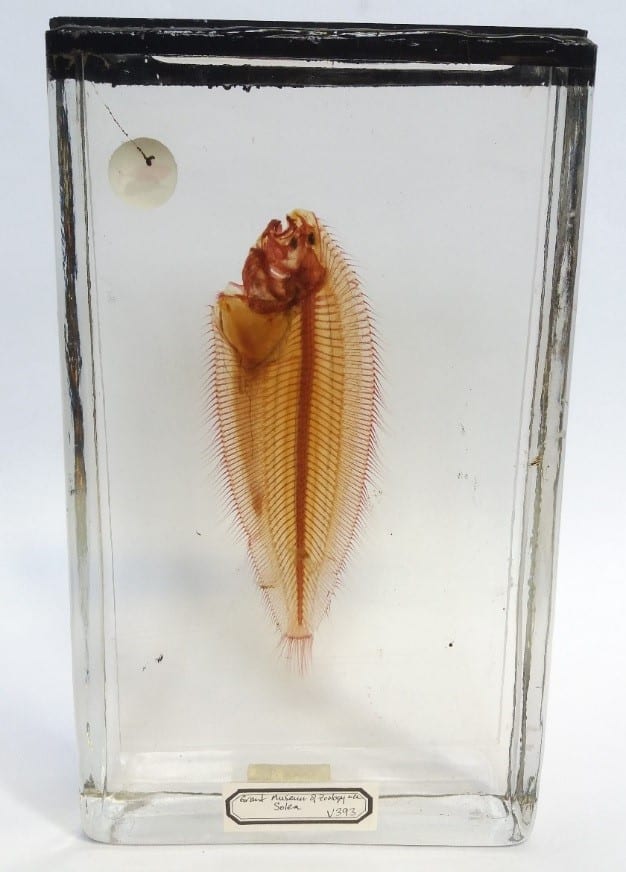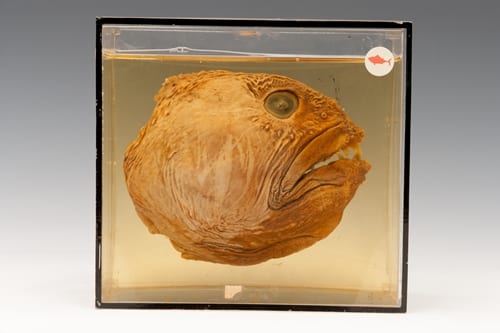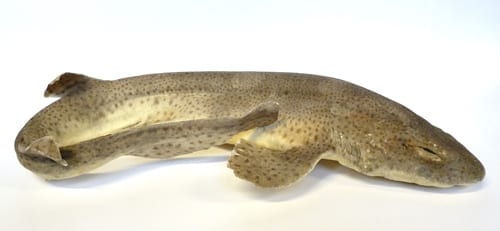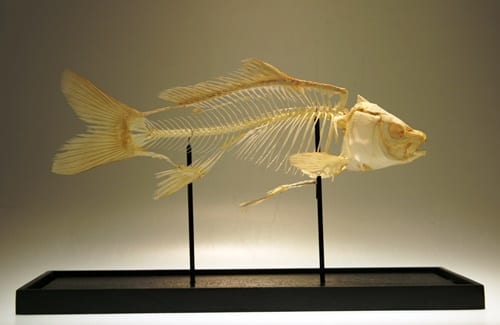‘Natural Creativity: Sex and Trickery’ is our new exhibition – opening tomorrow 19th October – at the Grant Museum. It explores the myriad of elaborate shapes, sizes and crafty behavioural tactics some animals have evolved in order to survive, reproduce and pass on their genes.
Through intricate drawings by the artist Clara Lacy, ‘Natural Creativity’ asks the question, why is the natural world so colourful and varied? Lacy has drawn species with highly unusual sexual behaviours or mechanisms for determining sex. It is commonly assumed that animals are born either male or female then reproduce as adults, but things can get much more interesting. Some species change sex over their lifetime, become a grandmother before giving birth, or trick others into thinking they belong to the opposite sex.
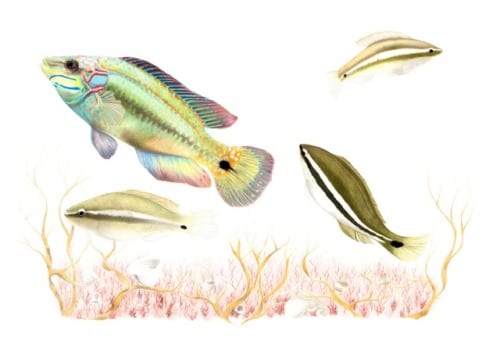
Ocellated wrasse (C) Clara Lacy.
The ocellated wrasse has an unusual mating system – different males use different strategies in the attempt to pass on their genes. The genetics of these strategies is being researched at UCL. “Nesting males” are brightly coloured and work to court females, defend nests and care for their young. These males attract the most females, but other males have evolved different routes to mating success.
Small males become “Sneakers”. They surreptitiously approach Nesting males and females while they are mating, and then release their own sperm into the water.
Medium-sized “Satellite males” cooperate with a Nesting male, helping them chase Sneakers from the nest. This means that they are tolerated by Nesting males, and spawn while the Nesting male is mating.
(more…)
Filed under Grant Museum of Zoology
Tags: Animal art, Art exhibition, birds, Clara Lacy, Evolution, exhibition, exhibitions, Fish, GEE, Genetics, Jack Ashby, lizard, sex, Sexual dimorphism
No Comments »
 Close
Close


